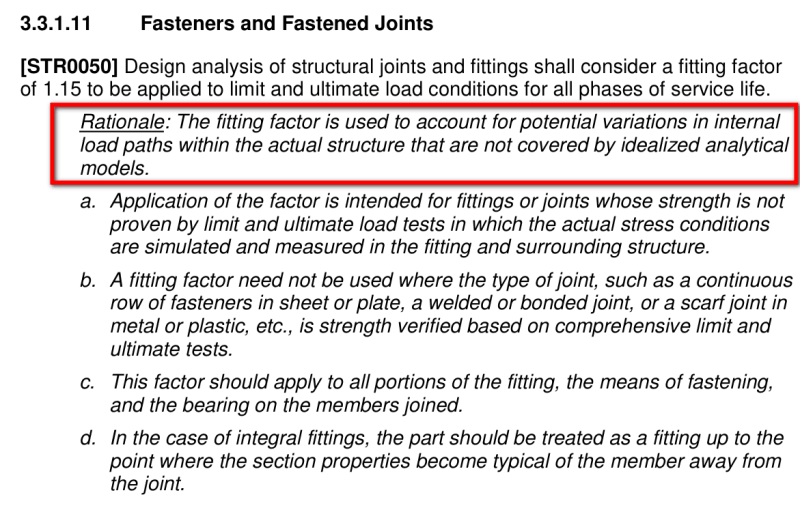Follow to the discussion from Link
Fitting factor FF = 1.15
In [14 CFR § 25.625 - Fitting factors] we can read.
"No fitting factor need be used with respect to any bearing surface for which a larger special factor is used."
Assume, I have casting factor CF=1.25, because the part is made by casting. Should I remove fitting factor? Or CF=1.25 is belong to material properties/cert, and not that "larger special factor" mentioned by FAA.
Thank you!
Vladimir Gantovnik, PhD
Fitting factor FF = 1.15
In [14 CFR § 25.625 - Fitting factors] we can read.
"No fitting factor need be used with respect to any bearing surface for which a larger special factor is used."
Assume, I have casting factor CF=1.25, because the part is made by casting. Should I remove fitting factor? Or CF=1.25 is belong to material properties/cert, and not that "larger special factor" mentioned by FAA.
Thank you!
Vladimir Gantovnik, PhD

